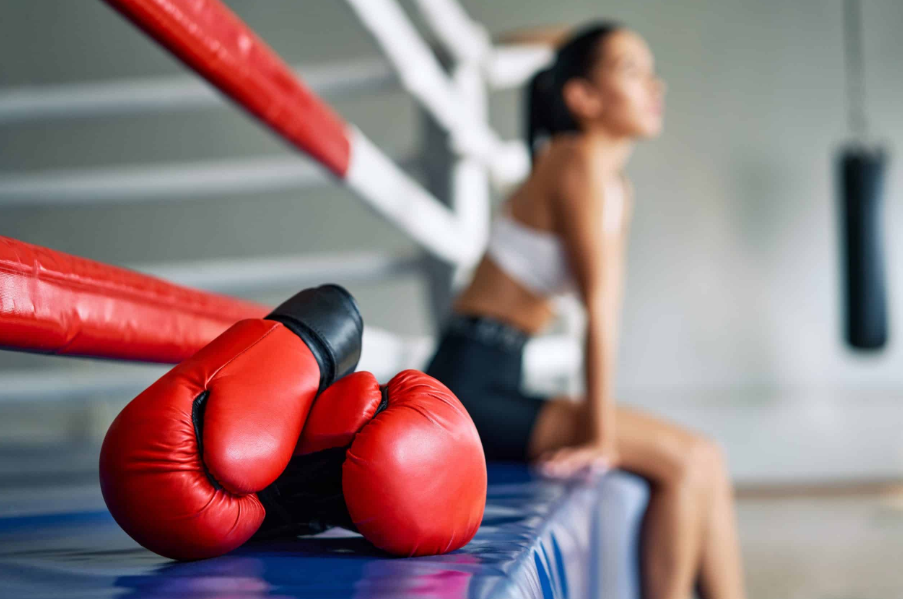
Boxing is a combat sport that combines physical strength, agility, and tactical thinking. It has a rich history dating back centuries and has evolved into a disciplined art form that requires both technical proficiency and strategic acumen. Whether you're a novice stepping into the ring for the first time or an experienced pugilist looking to refine your skills, mastering the art of boxing requires a deep understanding of technique and strategy. In this comprehensive guide, we will explore the fundamental elements of boxing and provide valuable insights to help you elevate your game.
A solid foundation is crucial in boxing, and it all starts with the proper stance and footwork. Stand with your feet shoulder width apart, your dominant foot slightly behind the other, and your knees slightly bent. This position provides balance, stability, and mobility. Maintain a light bounce on the balls of your feet, allowing quick movements in any direction. Mastering footwork allows you to control the distance, evade attacks, and set up your own offensive maneuvers.
The jab is one of the most important punches in a boxer's arsenal. It is quick, versatile, and sets up other punches. Extend your lead hand forward, rotating your fist so that your palm faces the ground upon impact. Snap the jab back quickly to protect yourself from counters. Use the jab to measure distance, disrupt your opponent's rhythm, and set up power punches.
The cross, also known as the straight right or rear hand, is a powerful punch delivered with the rear hand. Rotate your hips and pivot your back foot as you extend your arm, transferring power from your lower body to your fist. Aim for your opponent's chin or torso, and quickly retract your hand to maintain defensive readiness. The cross is a potent weapon for scoring knockouts or inflicting damage.
Hooks are devastating punches thrown in an arcing motion. There are two types: the lead hook and the rear hook. To execute a hook, pivot your front foot and rotate your torso while keeping your elbow bent. Aim for your opponent's temple or ribs to maximize impact. Hooks can be used to counter or deliver a punishing blow in close quarters combat.
Uppercuts are punches that come from below, targeting the chin or the solar plexus. To throw an uppercut, bend your knees and generate power from your legs. Drive your rear hand upward in a vertical motion, rotating your hips for additional force. Uppercuts are particularly effective in close range fighting and can catch your opponent off guard.
Boxing is not just about throwing punches; it's also about avoiding them. Defense is a critical aspect of the sport. Utilize head movement, such as slipping (moving your head to the side), bobbing and weaving (moving your head in an unpredictable pattern), or ducking (lowering your head under an incoming punch). Additionally, blocking punches with your gloves or forearms can absorb impact and minimize damage. Developing solid defensive skills will keep you safe and frustrate your opponent.
Ring generalship refers to your ability to control the pace and positioning of a bout. Understanding the dimensions of the ring and effectively using footwork to dictate the fight's flow is crucial. By moving laterally, circling, or cutting off angles, you can control the distance and create opportunities for offense while limiting your opponent's options. Maintaining awareness of your surroundings and adapting your strategy to exploit your opponent's weaknesses are key components of ring generalship.
Every successful boxer has a well thought out game plan. Analyze your opponent's strengths and weaknesses, and tailor your strategy accordingly. Are they a defensive fighter? Aggressive? Do they have a vulnerable side? Capitalize on their shortcomings while nullifying their strengths. Develop a tactical approach that maximizes your own skills and takes advantage of openings in your opponent's defense. Remember, boxing is as much a mental game as it is a physical one.
Boxing requires peak physical conditioning. Incorporate a comprehensive training regimen that includes cardiovascular exercises, strength training, and boxing specific drills. Work on improving your endurance, speed, and explosive power. Additionally, practicing shadowboxing, bag work, sparring, and mitt work will refine your technique and timing. Consistent training will enhance your physical attributes and allow you to execute techniques with precision and efficiency.
Lastly, boxing demands mental fortitude. Develop mental toughness, discipline, and focus. Stay composed under pressure, adapt to changing circumstances, and remain confident in your abilities. Visualize success, set goals, and maintain a positive mindset. Boxing is not only a physical contest but also a battle of wills, and mental preparation is vital to overcome adversity and emerge victorious.
In conclusion, the art of boxing encompasses a wide range of technical skills and strategic thinking. Mastering the fundamentals, including stance, footwork, and punches, forms the foundation of your boxing repertoire. Combine these techniques with defensive maneuvers, ring generalship, and a well executed game plan to maximize your chances of success. Dedication to conditioning, mental preparation, and continuous training will help you refine your skills and become a formidable boxer. Remember, boxing is both an art and a science, and it is through the integration of technique and strategy that you can truly excel in this noble sport.